The following is an excerpt from Roberto Valenzuela’s The Successful Professional Photographer
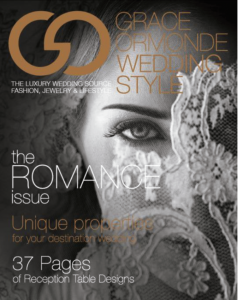
Figure 6.1 This is Grace Ormonde Wedding Style magazine. The photo featured on the cover is mine. You might recognize it from the cover of my first book, Picture Perfect Practice.
You might be surprised by how much photographic magazines need your content. I remember when, at the beginning of my career, I felt so intimated about submitting my work to magazines. I thought to myself, “Why on earth would they want my work? Who am I to be featured? My weddings are not fancy enough, and my portraits are of common people.” Now, I can say with complete confidence, “Magazines need content to survive, and they need a lot of it!” If you take the trouble to submit an article to a magazine, and they decide not to accept it…news flash: There are 10,000 other magazines and blogs in circulation. Being featured is about submitting the right type of work at the right time to the right place. Magazine editors are searching for specific looks or trends to feature. If your work is not chosen for a feature, likely it is not because you are a poor photographer. The reason may be that the work you submitted was not suitable for the guidelines, colors, styles, trends, or looks that the magazine was looking for at that time.
The following images are a few examples of national and international magazines that have featured my work. The features vary and include the cover, the back cover, and also the interior for a featured editorial. I’m showing you these so that you can imagine the perspective of your clients when they see all of these major publications featuring you as an expert photographer. When they see you and your work in print, it commands respect and admiration for the success you’ve had as a photographer. But most importantly, it gives them the idea that if they hire you as their photographer, their photos could be in the pages of magazines printed all over the nation and the world. That’s pretty cool! Even though some people prefer to stay private, most people would love to see their portraits or wedding photos printed in the pages of major magazines. Talk about bragging rights to their friends and family!
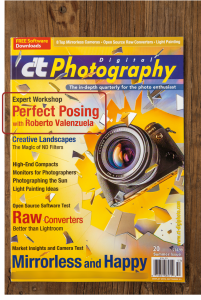
Figure 6.2
In this feature, [Figure 6.2] c’t Photography magazine featured me on the cover by name as an expert in posing. These kinds of features by credible publications give clients great confidence that they are dealing with an expert in their field and not just someone who is a good salesman or saleswoman.
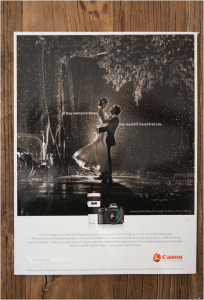
Figure 6.3
This [Figure 6.3] is the back cover of Popular Photography magazine, a major photography publication. In this example, the photo I took of my clients in Florida in the middle of a rainstorm is featured as an ad for Canon. Being featured on the cover or back cover is very difficult, and you can imagine how much credibility that gives you as a photographer.
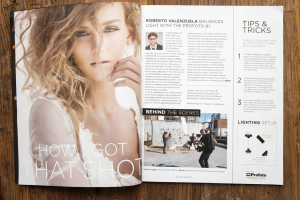
Figure 6.4
This [Figure 6.4] is the back cover of Popular Photography magazine, a major photography publication. In this example, the photo I took of my clients in Florida in the middle of a rainstorm is featured as an ad for Canon. Being featured on the cover or back cover is very difficult, and you can imagine how much credibility that gives you as a photographer.
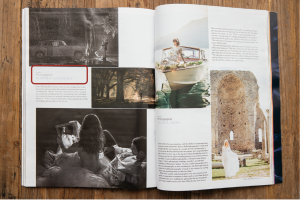
Figure 6.5
This feature [Figure 6.5] is inside the Spring Fashion issue of Grace Ormonde Wedding Style magazine. The article is titled “The Art of Making Memories.” Grace Ormonde is sold internationally and caters to a high-end wedding clientele.
Why You Need to Be Featured
Being featured in a publication is like a game: You cannot win the game if you do not play, and if you do play, you don’t always win. In the portrait and wedding professions, there are more photographers than “grains of sand on a beach.” It is very difficult to be recognized or discovered, so that’s why being featured is so crucial. It sets you apart from all the other grains of sand, so that you can be found. The more you are featured, the more people will find you. Eventually, prospective clients will know where to look, because they are searching specifically for you! That’s what the game is about.
Gain a Talented and Loyal Team
Having a loyal team contributes to the success of any photographer. We do not succeed alone. Great photography requires a sizable team. For me, what’s needed are a creative make-up artist, a hair stylist, a fashion stylist, a venue for the shoot, and an assistant or two. So, in a sense, it takes a village to output an amazing photo shoot.
Luckily, if you are a wedding photographer, these talented people and the venue are included and cost-free with the contract. What is especially wonderful is that most of the work is done for you. Now you must just do a superb job with the photographs. The stars are aligned for you, so think about this from the perspective of a wedding coordinator. Would he or she rather recommend a photographer who has a high chance of publishing the wedding, or someone who doesn’t care to submit photos?
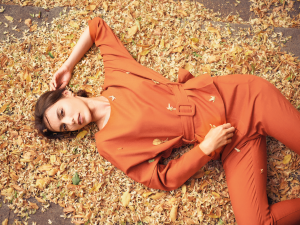
Now, let’s talk about if you are not a wedding photographer but a portrait or editorial photographer. You will need to find your own team. Furthermore, if you want that team to work on your project(s) for free, their reward is to become widely recognized for their work by as many people as possible. This means that if your work is frequently published in blogs or magazines, the team is going to want to work with you. Constant publishing will provide you with a very loyal team of highly talented people. If you aren’t published, why should they invest their time and talent when the photos are never going to be seen?
Find the Right Magazine or Blog for Your Submission
If you are a wedding photographer, an awesome retro wedding will not be suitable for a classic and elegant wedding magazine. It’s just not a good match. However, that retro event could be a perfect wedding to submit to a magazine that accommodates weddings with an unusual twist. This may seem to be common sense, but many people still don’t think about suitability or do their homework as much as they should. It takes too much time to select, resize, polish, and submit images just to be rejected because your submission does not fit the target market of that specific magazine. Doing your homework on how to find the perfect fit takes 30 minutes, tops.
Check Out Magazine and Blog Submission Guidelines and Requirements
Imagine the perspective of the person in charge of a magazine’s or blog’s submissions. The more you are able to view things from the perspective of others, the more successful you will be. Imagine that you work for a magazine and are sitting at your desk going through the daily grunt work. Every five minutes a new submission lands in your email inbox. You open the email and take a quick glance at the photos and immediately notice that they were not submitted in the required format. You still must assess 100 submissions… and counting. Are you truly going to take the time to correct the photos so they can possibly be considered for publication? I don’t think so. Not sending a submission the way the magazine clearly requests on their website can seem disrespectful. Don’t be that person. Read the guidelines and follow them with great care. Your submission needs to show that you took the time and the effort to submit work properly for that publication. They will reward that attention to detail.
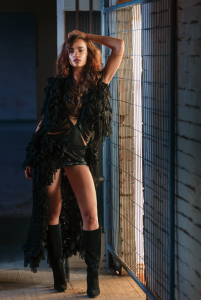
A Quick Note About Submission Etiquette
Respect the publication. It is considered exceptionally bad taste to submit the same wedding to multiple magazines or blogs at once. Put yourself in the shoes of the editor of a magazine who took the time to vet your work carefully enough to choose you. He or she is excited to let you know that your submission has been chosen. Then, the publication finds out that, after all their work, you have turned them down because another publication also chose your submission. If you were the editor for the magazine you turned down, resulting in their losing valuable time, how would you feel? Never do that.
Choose the right magazine or blog for that submission and honor it 100%. Do everything right by that publication. Naturally, you will develop a great relationship with that magazine editor, which will increase your chances of being published much more often.
Lastly, make sure you first check (and double-check!) with your clients to confirm that you can submit their wedding photographs for publication. As exciting as it is to have your wedding published, some clients are private and might not wish to have their wedding photos out in the world for everyone to see. So, ask for permission first. Make sure it’s alright with both the bride and the groom.
The Basics of Portrait and Editorial Submissions
Many of the principles for submitting your work to a blog or magazine for publication are the same regardless of what kind of photos you are submitting. Here are some informational items regarding editorial submissions that differ from wedding submissions.
Baby Steps
Non-wedding publications reach a much larger audience than those just catering to weddings. Therefore, they receive many more submissions and can be much pickier. A great way to build your credibility and name recognition and stand out from a large crowd of photographers is to have a good number of smaller publications publish you first. Then you build on that success.
It is not as hard as you might think to convince a smaller or local publication to publish your work. So, be motivated, have your work published, and gain some editorial submission experience. Once you have success with the smaller businesses, try for the regional and even the national publications. If you have been published by several publications, even if they are on a smaller scale, that speaks volumes about you to the editor of a national blog or magazine.
Fashion Editorial Photos Are the Opposite of Portrait Photographs
Fashion photographs feature the clothes or theme more than the individual. In fashion photography, it is a rookie mistake to think that the model being photographed is the main subject of your photos. The model is not the focus. The clothing is. The model complements the clothes but is always secondary to the clothing, shoes, or accessories. Therefore, plan your shoot to showcase the clothes in your unique style, and publications will find more interest in your photos.
Next, make absolutely sure that the clothes you are photographing are in style and in season at the time of your submission. Naturally, a magazine is not going to print an editorial featuring fall attire during the summer months. Timing is of the essence here. Your submission also needs to be well researched about current trends—what’s hot, and what’s in.
Writing Stories with Styled Shots
This is of the utmost importance, so think carefully. What is the point of your submission? Why did you do this shoot? Why should magazine editors bother looking at your images, let alone consider them? The answer is: because you have a story that complements your themed shoot.
The story could be about your opinion regarding a current fashion trend. For example, high-waisted women’s jeans or Birkenstock shoes may be making a major comeback. Write a story to go with your photographs. Does that make sense? Photographs cannot be published alone; they support the greater theme and story. If you truly want your submission to be extraordinary, take the time to create a quick mock-up of how you visualize the article and photos laid out in a magazine. Be sure to mimic the style and look of the publication you’re submitting to. This will make it much easier for the editor to visualize your photos and story in their magazine.
Now that you have finished all this work, cross your fingers and hope for the best. If you don’t hear from the publication, don’t wait for them to reach out to you. Reach out to them. Persistence pays off.
